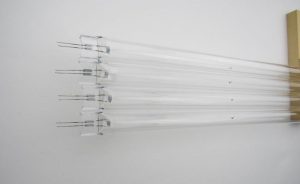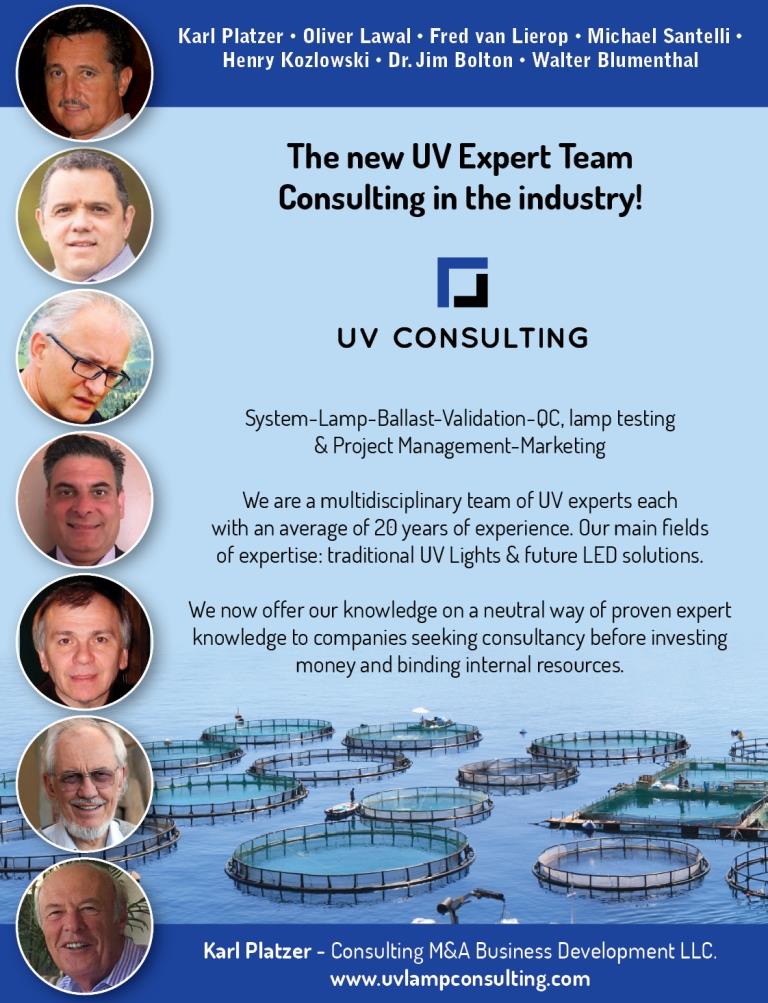 We recently came across a published article and during our review; we identified a few statements that to an unfamiliar reader, could be misleading. We considered this significant in terms of why considering independent support from our specialists is important. The following was found on the internet and has been published in book form:
We recently came across a published article and during our review; we identified a few statements that to an unfamiliar reader, could be misleading. We considered this significant in terms of why considering independent support from our specialists is important. The following was found on the internet and has been published in book form:
Ultraviolet Light in Food Technology: Principles and Applications
By Larry J. Forney, Carmen I. Moraru à ISBN10 1281993689 à ISBN13 9781281993687
Statements in section 2.3 Amalgam UV lamps
A concern over the impact of mercury release from lamps into the plant environment has encouraged research of mercury-free lamps. Instead of mercury, amalgam can be used in low-pressure amalgam (LPA) lamps, resulting in an extremely long life while ensuring high-power outlet. Up to 10 times the UV power density of an LPM lamp can be achieved, and they can be used at higher ambient temperatures of up to 90C. The UV intensity of LPA lamps is insensitive to temperature fluctuations. The amalgam lamps do not show the transmission loss of quartz glass associated with LPM lamps, and they therefore produce a constant disinfection action over the total operating life of the lamp. Compared with LPM lamps with a UV-C output of approximately 40%, up to 90% of the UV-C output power is delivered with the use of amalgam lamps. Due to their high efficiency, long operating life, and low operating costs, amalgam lamps represent an alternative to MPM lamps and can be specifically used in the food industry, as very little heat is generated. Depending on the type of quartz used, ozone-free or ozone-generating lamps are available.
After UV Expert review, we offer the following critical clarifications. Please see the red insertions:
A concern over the impact of mercury release from lamps into the plant environment has encouraged research of mercury-free lamps. (Correct, – however only Excimer lamps and UVC LED’s have been successful in achieving this mercury-free goal.)
Instead of mercury, amalgam can be used in low-pressure amalgam (LPA) lamps (Correct – amalgam can be used in low-pressure amalgam lamps) resulting in an extremely long life (NOT Correct – the use of amalgam in and by itself will not result in longer life. Longer life can only be accomplished through the application of a proper protective coating on the inside of the lamp tube, something that has equally successful in low-pressure mercury lamps) while ensuring high-power outlet (NOT Correct – output would be the preferred word here, not outlet).
Up to 10 times the UV power density of an LPM lamp can be achieved (NOT correct: A more realistic projection is that low-pressure amalgam lamps may offer 5 times more UV power density compared to low-pressure mercury lamps), and they can be used at higher ambient temperatures of up to 90C. The UV intensity of LPA lamps is insensitive (Please note – within a minor variation in output) to temperature fluctuations (Please note – over a specified temperature range. This temperature range is much wider for LPA lamps than for LPM lamps through the specific nature of the amalgams used).
The amalgam lamps do not show the transmission loss of quartz glass associated with LPM lamps (NOT correct – LPA lamps have a useful life based on output depreciation that is usually specified to 85% or so of the 100-hour output. Transmission losses are strongly influenced by the use of the above-mentioned coating on the inside of the lamps), and they therefore produce a constant disinfection action over the total operating life of the lamp (NOT correct – All discharge lamps will exhibit a drop-in output, as specified by the supplier. This specification is usually based on long-life testing, either in standardized laboratory conditions, or in actual controlled application burning tests).
Compared with LPM lamps with a UV-C output of approximately 40%, up to 90% of the UV-C output power is delivered with the use of amalgam lamps. (NOT Correct – Both LPM and LPA have a comparable lamp efficiency, defined as the UVC output in Watts, divided by the lamp power in Watts. Specific lamp design variations may result in deviations from expected efficiency, depending on application and lamp use). Due to their high efficiency, long operating life, and low operating costs, amalgam lamps represent an alternative to MPM lamps and can be specifically used in the food industry, as very little heat is generated. Depending on the type of quartz used, ozone-free or ozone-generating lamps are available.
Closing statement: In order to provide correct information and to be able to make the proper judgement concerning lamp selection for your application, it is important to use independent sources to verify that technical claims and comments are correct and represent an unbiased assessment of the technical field of UV sources and applications







